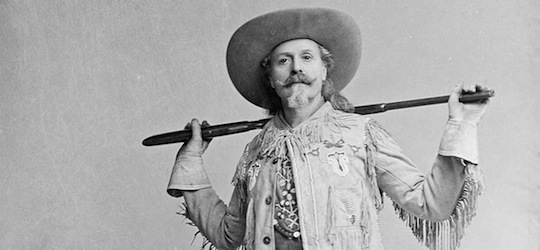Wednesday, August 2, 2017
9:10-10:40 AM Session 1: Interpreting Buffalo Bill (Coe Auditorium)
Jeremy Johnston, Chair
Paul Fees, Buffalo Bill and the Museum
Before W.F. Cody died, he is supposed to have told his niece that he would like to see the West (and Himself) remembered in a museum. How has Buffalo Bill’s museum presence reflected his historical presence?
Paul Fees is an Arizona native who earned the A. B. in history at Stanford University, and the M. A. and Ph.D. in American Civilization at Brown University. From 1981 to 2001, he was curator of the Buffalo Bill Museum. He produced more than twenty exhibitions, many of which traveled nationally and two of which traveled to Europe. He serves on the boards of the American Indian Institute and the Coalition of Families of Cold War/Korean War MIAs. He has published and lectured widely on the American West and has advised and been interviewed for documentaries on PBS, BBC, A&E, the History Channel, France 1, CBC, NPR, and regional networks. His publications include the recent books Victor Alexander and the Saddle: Art, Craft, and Business (2011) and The Rock of Main Street: A History of Banking in Cody, Wyoming, 1901-2008 (2016).
Steve Friesen, Lakota Performers in Europe
The visit by Buffalo Bill’s Wild West to Europe in 1887 initiated an era of wild west performance that lasted fifty years. This offered the Lakota an opportunity to preserve and promote their culture despite US government efforts to suppress it. It also molded European understanding of the American West
Steve Friesen is the Director of the Buffalo Bill Museum and Grave in Golden, Colorado. His latest book, Lakota Performers in Europe: Their Culture and The Artifacts They Left Behind (2017), has just been released by University of Oklahoma Press. He is also author of Buffalo Bill: Scout, Showman, Visionary (2010).
Peter H. Hassrick, Art in Cody: The Whitney/Cody Legacy
Two legendary American artists, William F. Cody a performer extraordinaire and Gertrude Vanderbilt Whitney a remarkable sculptor, saw their paths cross in the first quarter of the 19th century. Their union was not so much as artists though, but as patrons … patrons of the western legacy and American art. This lecture is about that intersection, their shared vision and the ultimate result of their compatibility, the creation of the Whitney Museum of Western Art at the Buffalo Bill Center of the West.
Peter H. Hassrick is a writer and independent American art scholar who focuses on the West. He is Director Emeritus and Senior Scholar (Buffalo Bill Center of the West, Cody), Director Emeritus (Petrie Institute of Western American Art, Denver Art Museum), Founding Director Emeritus (Charles Russell Center, University of Oklahoma), and founding Director (Georgia O’Keeffe Museum, Santa Fe) following twenty years as director at the Buffalo Bill Historical Center. He was also Curator of Collections, Amon Carter Museum, Fort Worth, for five years. Mr. Hassrick was born in Philadelphia and raised in Denver and Steamboat Springs. B.A., History, University of Colorado, M.A., Art History, University of Denver and Honorary PhD, University of Wyoming.
